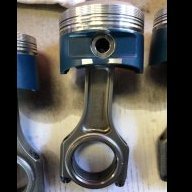Announcements
-
Similar Content
-
Latest Posts
-
By joshuaho96 · Posted
Somehow we've reenacted this video completely seriously: -
By joshuaho96 · Posted
Nistune is pretty easy if all you want to do is change the injectors. TIM + latency change will do it. But I am very skeptical your mechanic has actually diagnosed the issue. As others have said flow/function test your injectors. -
^This. If you have to do injectors, and you have to buy bigger ones, get the smallest Bosch EV14 based injectors of the correct length that you can. This will be about 500-525cc most likely. The stock ECU (with Nistune) will be fine to run those. Then, use a Nistune. Tune it yourself. If all that you are doing is changing injector size, then you literally only have to change one number to do it, and then maybe some fine tuning of that number. You will not need to touch the fuel or ignition maps at all.
-
I don't know what those pipes are, but I'd say there is a good chance they are old school Japanese tuner because they are equal length and nicely made. Maybe someone like @Rezz who has direct access to japanese history might be able to help. Even so, I'm not sure what inspectors could check it to, they presumably are googling 30 year old japanese stuff same as us.
-
By robbo_rb180 · Posted
Yep he is an awesome bloke, we work together on that car. You will have fun at the 6hr, Tony doesn't stuff around when he goes racing does pretty well.
-




Recommended Posts
Create an account or sign in to comment
You need to be a member in order to leave a comment
Create an account
Sign up for a new account in our community. It's easy!
Register a new accountSign in
Already have an account? Sign in here.
Sign In Now